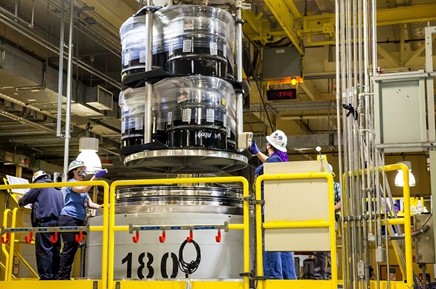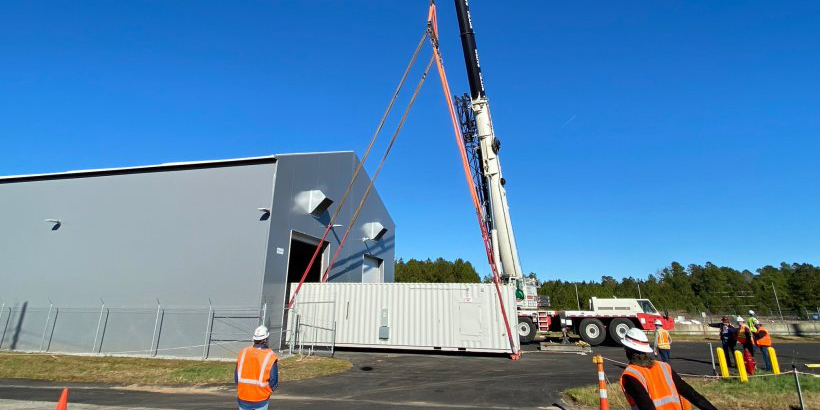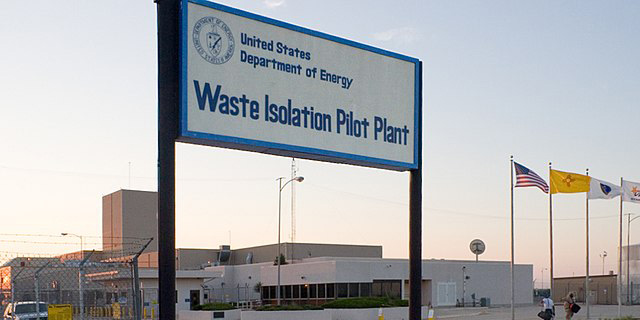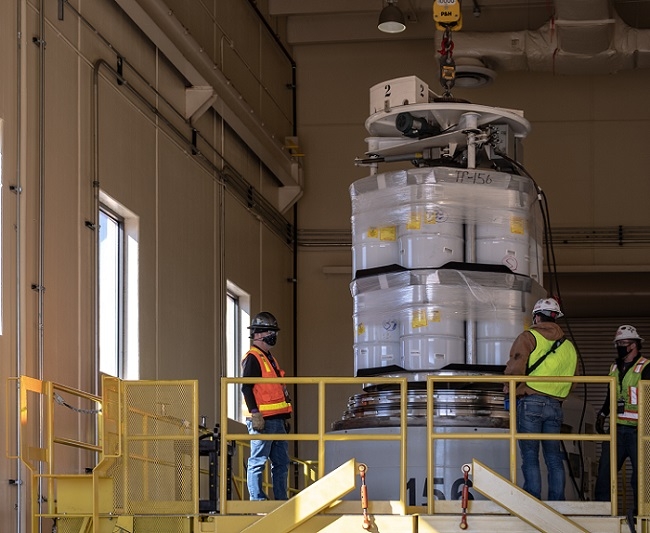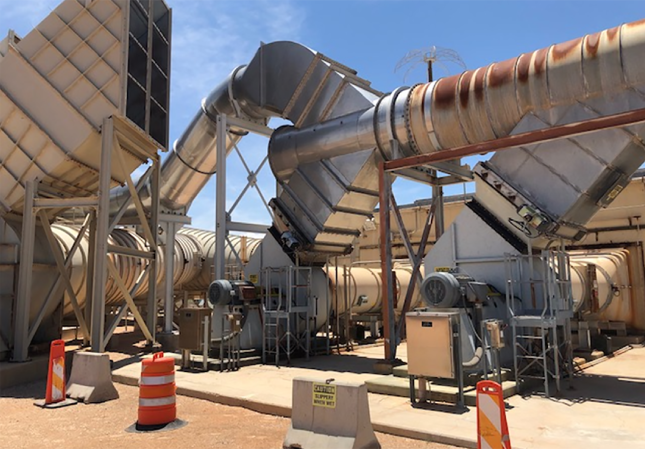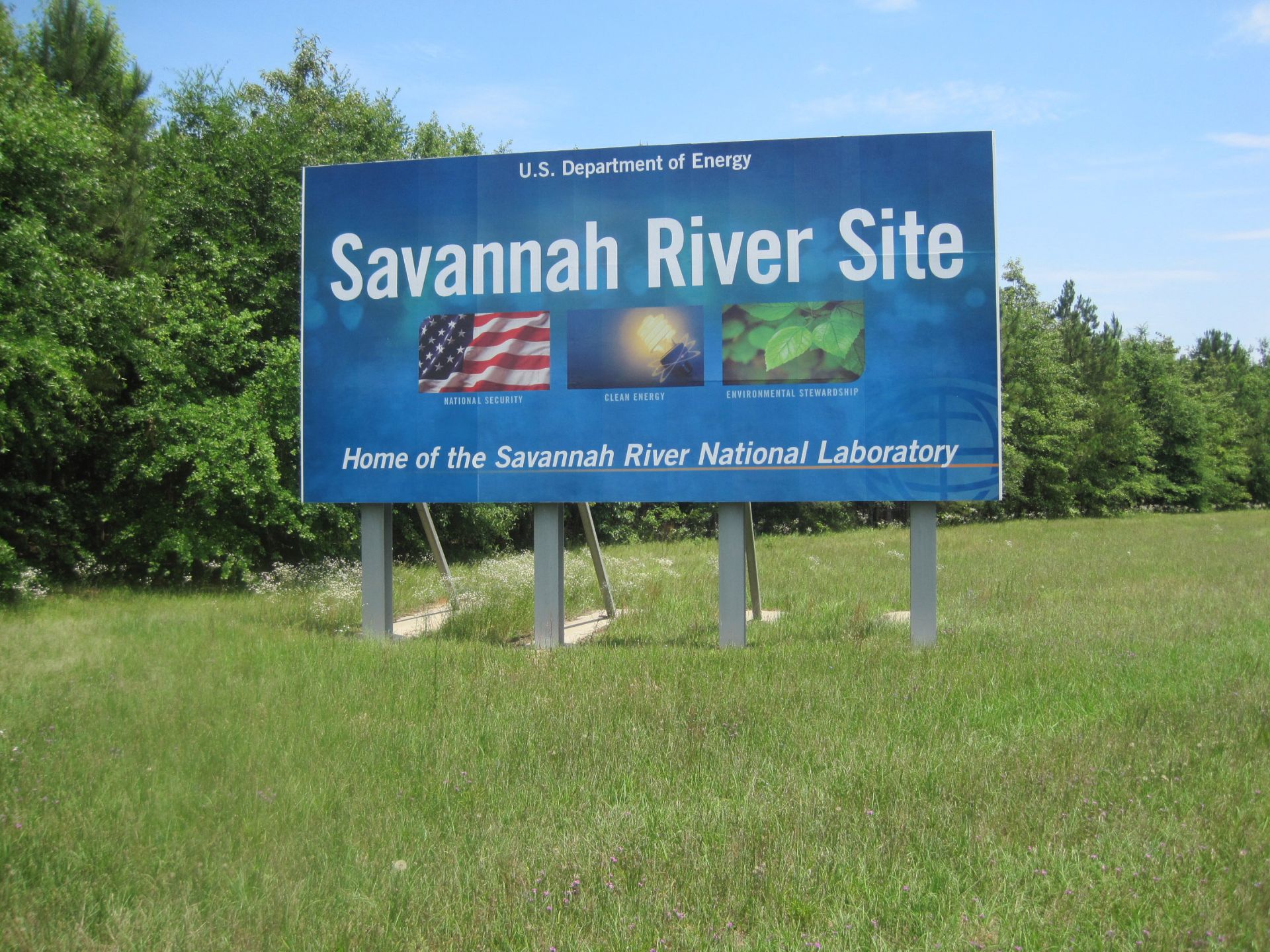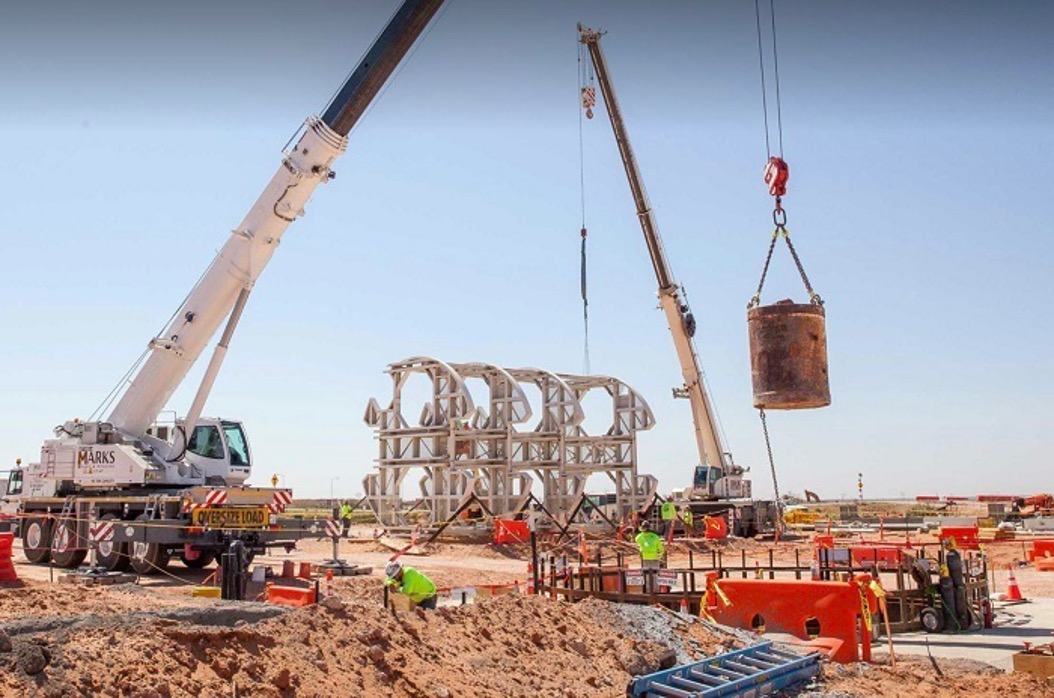Waste handlers take radiological readings as a crane lifts containers from a TRUPACT-II cask in the contact-handled waste bay at WIPP. Photo: DOE
The Waste Isolation Pilot Plant in southeastern New Mexico is once again accepting shipments and processing transuranic waste following a two-month annual maintenance outage. According to the Department of Energy, WIPP is back to accepting five waste shipments per week, with post-pandemic plans to increase shipments to 10 per week.
Crews move equipment used to inspect drums holding diluted plutonium into a storage site in K Area at the Savannah River Site. Photo: DOE
Workers at the Department of Energy’s Savannah River Site in South Carolina recently finished transferring equipment to the site’s K Area in preparation of shipping downblended plutonium to the Waste Isolation Pilot Plant in New Mexico for disposal. The plutonium is part of the 34 metric tons of surplus plutonium the National Nuclear Security Administration plans to ship to WIPP under the “dilute and dispose” option the department adopted following the cancellation of the MOX Fuel Fabrication Facility project.
ANS urges National Nuclear Security Administration to reconsider drafted rule
La Grange Park, IL – The American Nuclear Society (ANS) is recommending that the National Nuclear Security Administration (NNSA) consider using surplus plutonium from nuclear weapons as fuel for advanced reactors to generate carbon-free energy, rather than diluting and disposing 34 metric tons of weapons-grade plutonium at the Waste Isolation Pilot Plant (WIPP) in New Mexico as proposed by the NNSA.
The geologic repository for defense-related transuranic waste reached a milestone in 2019.
February 10, 2020, 7:38AMRadwaste SolutionsJef Lucchini, Robert Kehrman, and George Basabilvazo 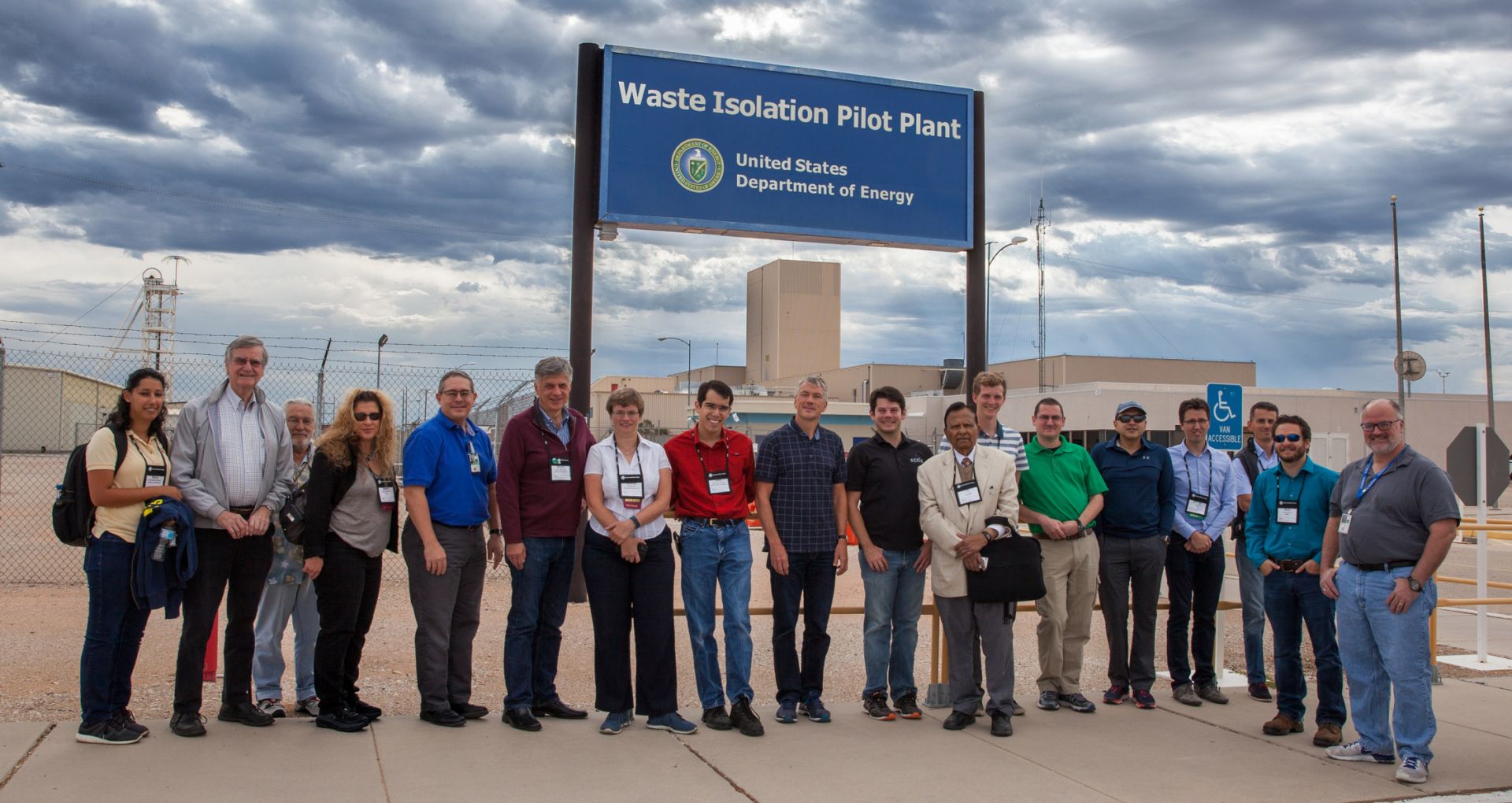
Participants to the 2017 Nuclear Criticality Safety Division topical meeting attended a tour of the WIPP facility, which marked its 20th anniversary this past year. Photos courtesy of WIPP
March 26, 2019, marked the 20th anniversary of the first shipment of transuranic (TRU) waste to the Waste -Isolation Pilot Plant (WIPP) facility in southeastern New Mexico. Celebrations of the 20-year mark of waste operations recognized the role of the WIPP facility in cleaning up legacy TRU waste from 22 generator sites nationwide.
